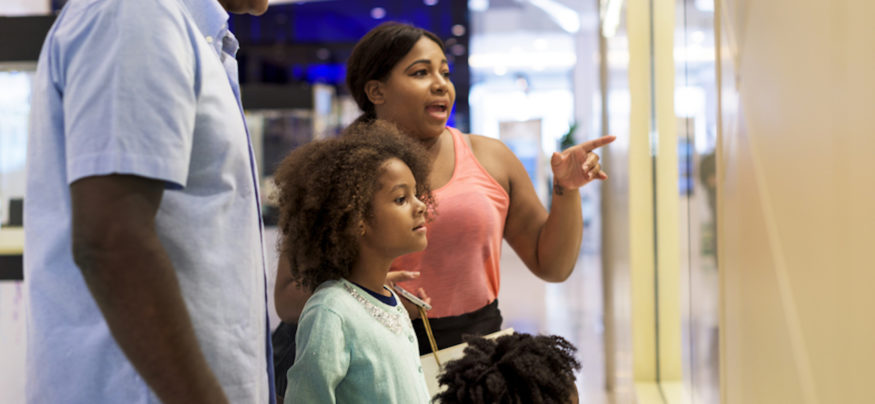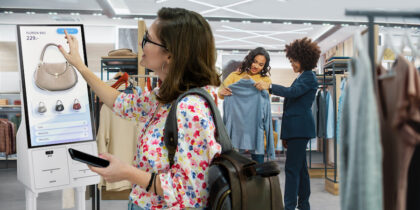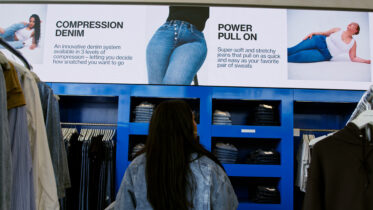Retailers need to refresh their brick-and-mortar environments to meet consumer expectations for an intriguing, engaging in-store experience. E-commerce continues to grow, in large part because consumers find current in-store experiences to be a chore compared to online shopping. A Capgemini Consulting report on the problems facing physical retail stores found that 40 percent of consumers find in-store shopping a challenge — more than 30 percent said they would rather wash dishes than shop in store.
Consumer Expectations Versus Reality
Brick-and-mortar locations are still relevant in the eyes of retailers, yet only 45 percent of consumers agree, and a startling 71 percent are willing to skip a physical store for an online market where they can avoid long lines and other in-store hassles. Consumers say they want retailers to offer more than a marketplace for products — they want social spaces, learning experiences and inspiration, such as cooking or do-it-yourself workshops.
Consumer expectations for their in-store experiences go beyond the experiential: They want shopping at physical stores to offer the same benefits as online, with the ability to pick up items in the store or have them shipped to their homes, loyalty points for store visits, and store associates who have answers about product specs, availability and inventory.
The store of the future, according to the report, will be one that successfully combines the digital and the physical. Simple-to-incorporate technology can enable retailers to meet many of these customer expectations, but many retailers are focused on the wrong digital enhancements. The Capgemini report revealed that there’s a marked difference between the digital initiatives retailers are implementing and the initiatives and technology customers find useful. The discrepancy, according to the report, is that retailers are having difficulty gauging the ROI on digital investments. The report recommends that retailers partner with a trusted vendor who can help gauge ROI and pair that with digital retail initiatives.
Brick, Mortar And Mobile
Discover how mobile technology can connect sales-floor endpoints and improve the retail experience. Download Now
Smart Digital Upgrades
With only 45 percent of consumers seeing physical stores as important, having a mobile shopping app is more critical than ever. Consumers say they use retail apps as opposed to shopping in-store because a mobile app makes it easier to find information about products and promotions, provide feedback and compare products. In addition to apps, there are other digital upgrades retailers can leverage to combine the physical with the digital:
Tablets: Use of tablets in-store is considered both underappreciated and high-value, according to Capgemini, with 68 percent of consumers making purchases on tablets and kiosks after testing a product in-store. Sales associates equipped with tablets can go online to public websites and secured corporate sites to provide customers with product specs as well as recommend ancillary companion products, such as protective cases for smartphones. This provides not only superior customer service, but also helpful — not pushy — upsell opportunities that can increase store revenues and profits.
Smart Mirrors: In a dressing room, a smart mirror can be used to enable customers to virtually try on clothes in different sizes and colors, while in digital display mode, the signage can act as a digital hub for advertising and other brand-related content.
IoT Devices: Beacons, POS devices and other sensors can collect important customer information regarding purchases, foot traffic, time spent in different areas of the store and other data to enable retailers to change shelf displays, improve store design and make other changes to enhance the in-store customer experience.
Speeding the Checkout
Even if the customer has a positive in-store experience, it won’t matter if it takes them too long to complete the purchase. Checking out is the last thing the customer will remember. Any delays, such as long lines or payment complications, will lead to customer dissatisfaction with the entire in-store experience. Retailers can avoid this by incorporating mobile point-of-sale (mPOS) solutions that enable sales associates to check out customers immediately. By accepting payment at the point-of-sale, retailers can make checkouts quick and painless.
By combining these digital technologies, retailers will be able to re-invent their physical locations to make in-store shopping an enjoyable experience for customers, one that they want to do again, meaning repeat sales as well as additional revenues and profits.
Technology is helping retailers change how consumers interact with businesses on a daily basis. Get a deeper look at innovations influencing this change.








